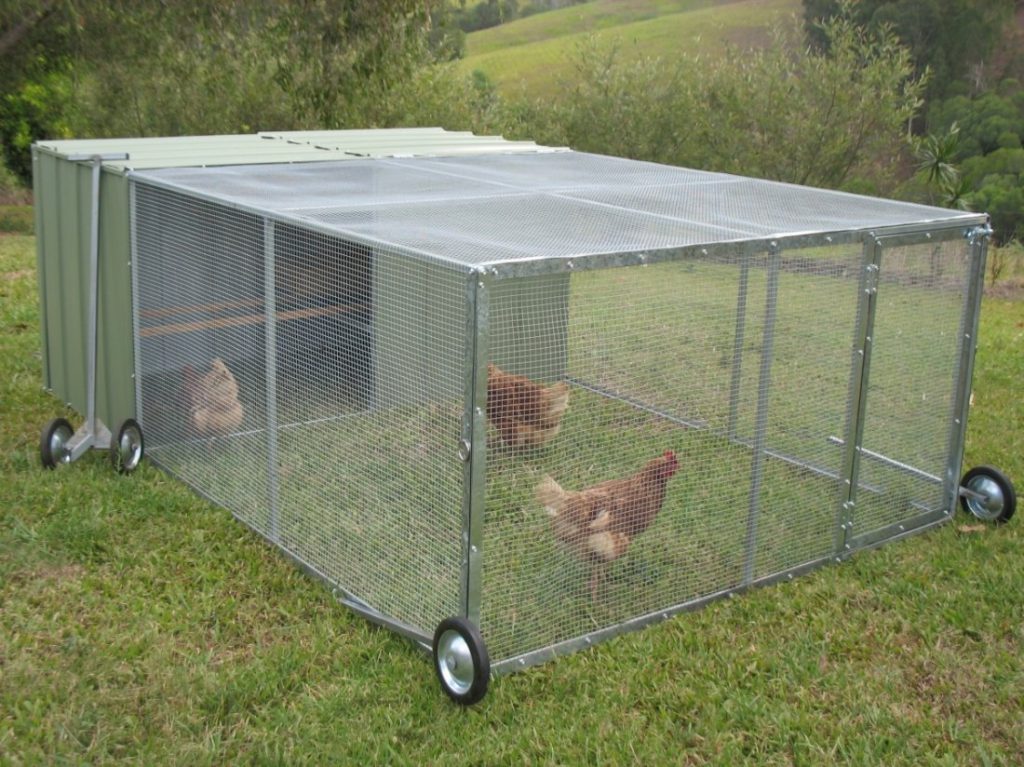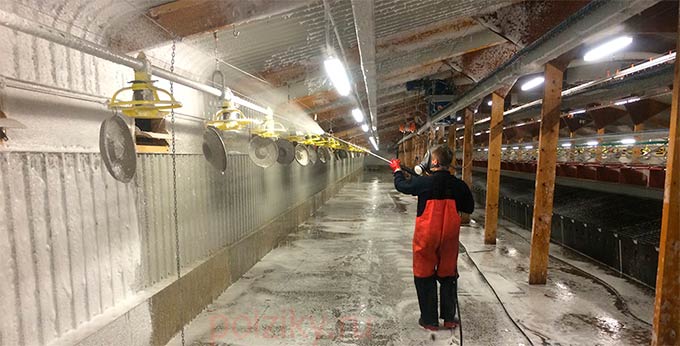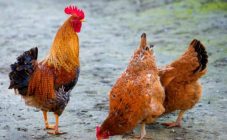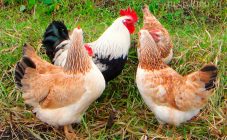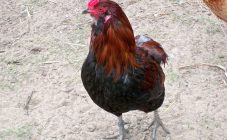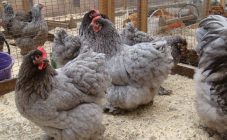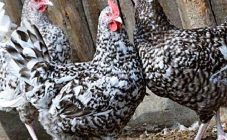Content:
The variety of modern poultry species is amazing. There are both pure breeds and hybrid crosses. The proposed characteristics of chickens will not leave anyone indifferent. Most often, preference is given to breeds with a meat-and-meat orientation. Among them are the Wyandotte chickens.
general information
Wyandot is a breed of chickens, which, in addition to the egg and meat direction, can be used for decorative purposes. Their appearance is quite interesting. An abundance of different colors and a calm disposition make them attractive for any site.
When breeding, thoroughbred chickens of the Brama Cochinhina Orpington Wyandota were used, the resulting hybrids are described as representatives of hardy and calm poultry in character. From the Kohinhinka, the breed got thick plumage, which allows it to tolerate low temperatures well. Wyandotte is characterized by the presence of more than 15 different colors of plumage. There are silver-bordered, white, partridge, fawn and other types of color.
The original distribution area of the breed is America. In 1883 they were registered according to the breed standard. In Russia, Wyandotte chickens appeared only in 1911, where they improved for several more decades.
Breed characteristics
The breed has 2 chicken branches: standard and dwarf. In standard birds, the weight of roosters and chickens is 3-4 kg, in dwarf birds - 0.9-1.2 kg. Egg production in both varieties is at the level of 130-140 eggs at 48-62 grams.
The description of Wyandotte chickens should be divided into 2 branches: a description of males and females.
In appearance, roosters have a medium-sized head with a yellowish short beak. The medium-sized scallop is a distinctive feature of birds - graceful, close to the head throughout its entire length. A rounded spine is present on the crest, following to the occiput line.
Eyes in chickens with a reddish-orange tint, round, taking up a lot of space on the head. Lobes and earrings are characterized by the absence of folds and wrinkles, elongated, red with a distinctive shine. The neck is bent backwards, of medium length. The collar, covering the shoulders, descends on the back in a lush fan.
The body of roosters is longer than in height. The broad back passes into the same broad shoulders. The spine line rises up in the lumbar region. Abundant plumage gives a rounded appearance to the whole bird. The bend, passing from the neck to the back and further to the tail, resembles a musical instrument - a lyre in outlines. The short but bushy tail is set at a 40 ° angle. The tail feathers covered with braids are short and rather stiff.
The belly and chest are spread wide. The metatarsus of the legs are long, with widely spaced toes, rich yellow. With age, the color changes to a lighter straw shade.
The most popular subspecies is silver, with a white-gray predominant color of plumage. Thanks to the description of the silvery Wyandotte hens, their popularity has grown compared to other colors. All feathers on the body are edged with a black line. There should be no less than 3 such lines on the wings. The plumage of the tail and primary feathers is rich black, the presence of a greenish tint is possible.The hocks and beak of such individuals are yellow or horny. Down feathers should be as dark as possible. In females, the belly and back of the body are black, in contrast to males. Their loins and breasts are silvery.
Wyandot are cold-resistant types of chickens, unpretentious to the conditions of detention. When keeping such chickens, it should be borne in mind that there should be 10 females for 1 rooster for good breeding work. On 1 square meter of area, no more than 10 individuals of the standard species and no more than 15 dwarfs should be planted.
When keeping an aviary, it is not necessary to install high fences, because this species does not fly well. For walking standard chickens, a plot of 0.5 acres is required, while for dwarfs the required territory may be 2 times less.
Breeding features
When breeding chickens of the Wyandotte breed, it should be remembered that the maternal and paternal lines must be kept separately.
Plumage color, as a rule, is not inherited. To breed a special color, individuals of different types should be crossed, since with inbred crossing, the color weakens.
The external indicators of eggs, both dwarf and standard, practically do not differ. Therefore, identifying future chicks can be difficult. It is important to maintain a balanced feed and feed it systematically in order to obtain a strong parent flock. Wyandotte are sedentary chickens, but they have a good appetite.
When raising chicks as brood hens, nests should be established around the perimeter of the house. The optimum is the location of the nest at a level of 30-60 cm from the floor surface. The hens are characterized as caring mothers.
The incubation process is no different from any other kind of chicken. After hatching, chicks should be kept in a brooder, controlling the temperature. The hatchability of chicks is quite high. Chicks should be fed a mixture of boiled eggs and semolina until they are 1 month old. After that, you can start adding greens, dairy products. With age, you can begin to introduce meat and fish waste. The presence of water in the house should be constant, as well as the shell rock. Without it, the gastrointestinal tract begins to atrophy in birds.
There are no specific diseases for this breed. To prevent infection, it is necessary to carry out routine vaccinations, treatments against parasites and anthelmintic measures. The Wyandotte breed itself is distinguished by its cleanliness. However, this does not mutually exclude the mandatory sanitization of enclosures or cages.
Changes in the behavior of some individuals, a change in the color of the coat, loss or ruffling of feathers are the first signs of a change in health. In this case, individuals must be deposited in an isolated place and a veterinarian must be called in to determine the reasons for the changes.
Advantages and disadvantages of the breed
Like any animal, the Wyandotte breed has its pros and cons.
The advantages over other breeds of steel:
- good frost resistance of individuals;
- active egg production, which does not stop in winter;
- a high percentage of hatchability and subsequent survival of chickens;
- the ability to live on the same territory with other types of poultry;
- high taste qualities of both meat and egg products.
The disadvantages include:
- a sedentary lifestyle, accompanied by the development of obesity;
- small distribution of the breed in Russia and, as a result, its high cost.
Despite the high cost, when breeding the Wyandotte breed of chickens, the costs of the initial herd quickly pay off. By themselves, birds are good at showing maternal instinct and can independently raise healthy offspring.Hatchery also has a high survival rate. An interesting appearance allows you to keep such chickens, combining a decorative function with an egg and meat direction. Rapid weight gain and early age at the start of egg production make them especially attractive. Caring for such a breed is no different from caring for ordinary chickens. Compliance with the usual rules of maintenance will help farmers get high-quality and tasty products.


